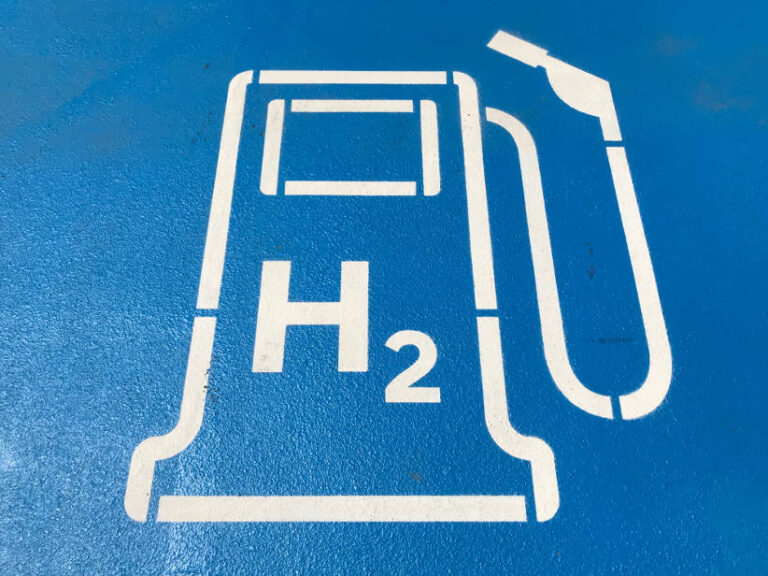Hydrogen: Hope or Hype? was the title of one of the more existential sessions at the 2022 AfMA fleet conference.
Hydrogen fuel cells are said to be the future for trucks, buses and trains, and to a lesser extent passenger vehicles. Governments and corporates and investors (think Twiggy Forrest and his Fortescue Future Industries) are investing billions in startups and experimental hubs, research and development and production and distribution infrastructure. It was hydrogen 101 with musings about a future that was certain, although inchoate.
The executives on stage for the conversation — which roamed from the colours of hydrogen to joining the dots of hydrogen hubs — included Ampol’s head of hydrogen Patrick Luxton and Hyundai’s future mobility manager Scott Nargar, also a founding member of the Australian Hydrogen Council. They were joined by Neil Wang, CEO of Foton Mobility, who in 2021 commissioned their first commercial hydrogen city bus in Sydney, using a fuel cell developed with Toyota. Tony Blackie, former journalist and now vice president of hydrogen vehicle entity H2X Global, was also in the line-up.
“At the Australian Hydrogen Council, we’ve worked very hard over the last 10 years to prepare the market for the opportunity to create hydrogen here to enable our transport networks to transition to a cleaner form of transport across road, rail and marine, and also look at the opportunity to export our hydrogen overseas,” said Nargar at the opening.
A spotlight has been thrown on the colours of hydrogen as Forrest advocates for his green hydrogen projects. Basically, the different colours of hydrogen indicate how environmentally friendly they are and how they were generated — black from gasification of coal which releases carbon dioxide, and green from renewables such as wind and solar and where no greenhouse gases were produced. Blue hydrogen is made from splitting natural gas, where greenhouse emissions have been captured and stored. Grey hydrogen is also from splitting natural gas but in this case the greenhouse gases were released into the atmosphere.
Wang, with experience gained in China, said with the industry in gestation all the colours of hydrogen will be useful for helping to get the energy transition off and running. Wang also touted adoption of a model for building the industry here, of creating hydrogen hubs where like-minded businesses or governments pool resources to share fueling stations. “We start with a dot first then we link up the dots together. This is how you start having an industry.”
To the question of horses for courses, one can think about replacing diesel fuelled vehicles with hydrogen fuel cells and gasoline power with electric.
“The applications for hydrogen are more likely in that heavy vehicle diesel replacement. And then the battery electric clearly in the lighter and passenger vehicle side,” said Luxton.
Blackie said his company was working with a Swedish local government body trialling hydrogen powered garbage trucks. The authority had found its electric trucks good until fully loaded and travelling uphill. Then not so good.
Nargar said Hyundai had drawn a line: “That breakpoint is really passenger vehicles and below will be electric.” The equipment for a hydrogen fuel cell vehicle was too bulky at this stage and diminished competitiveness with like sized smaller vehicle categories for things like boot space, and seat height. “it really comes down to packaging convenience. You’ve still got to make the cars accessible. They’ve got to be comfortable. They’ve got to have a load carrying capacity. The hydrogen technology is bigger.”
“Hydrogen vans will be the next big thing,” said Blackie.
Meanwhile, research projects at universities around the country, are looking at nano technology and ways to reduce the size of batteries, inverters and electric motors. Others are investigating new polymers for safer and stronger hydrogen tanks.
“There’s a whole lot of research happening right here in Australia and around the world to make that future technology for both EV and fuel cell cheaper, more efficient, more durable and and ready for the mass markets,” said Nargar.
There’s some 80 hydrogen development projects currently underway in Australia said Luxton.
“We’re at the very beginning,” said Blackie, adding, “There are a lot of very smart people out there who are trying to work out how we can make it more effective, more cheaper, and more ubiquitous so that it’s there for everyone.”
The panel spoke at the Australasian Fleet Managers Association fleet conference in Sydney in May.
— Caroline Falls has been contributing to Fleet Auto News since 2015. She is a freelance reporter. Contact: carolinefalls@gmail.com.






